However, while the lion’s share of Turnbull’s most successful and influential contributions have surrounded aesthetic pursuits, his great love affair as a creative was found in the hi-fi audio world and is expressed via the designs he’s crafted (and according to most of his clients, perfected) with his OJAS line of hi-fi speakers and amplifiers.
With OJAS, Turnbull has married the DIY spirit of streetwear culture with the pursuit of the kind of audio experiences that hi-fi enthusiasts describe almost exclusively in terms of hyperbole. And while descriptions of the sounds produced by OJAS speakers and amps may demand fancy superlatives and precious-sounding adjectives (and ultimately pale in comparison to a firsthand listening experience), the reality is that Turnbull’s designs hinge on an unwavering dedication to refined simplicity. Turnbull’s approach to hi-fi systems attempts to answer but a single question: How can I do as little as possible to the audio signal to get a really pure sound?
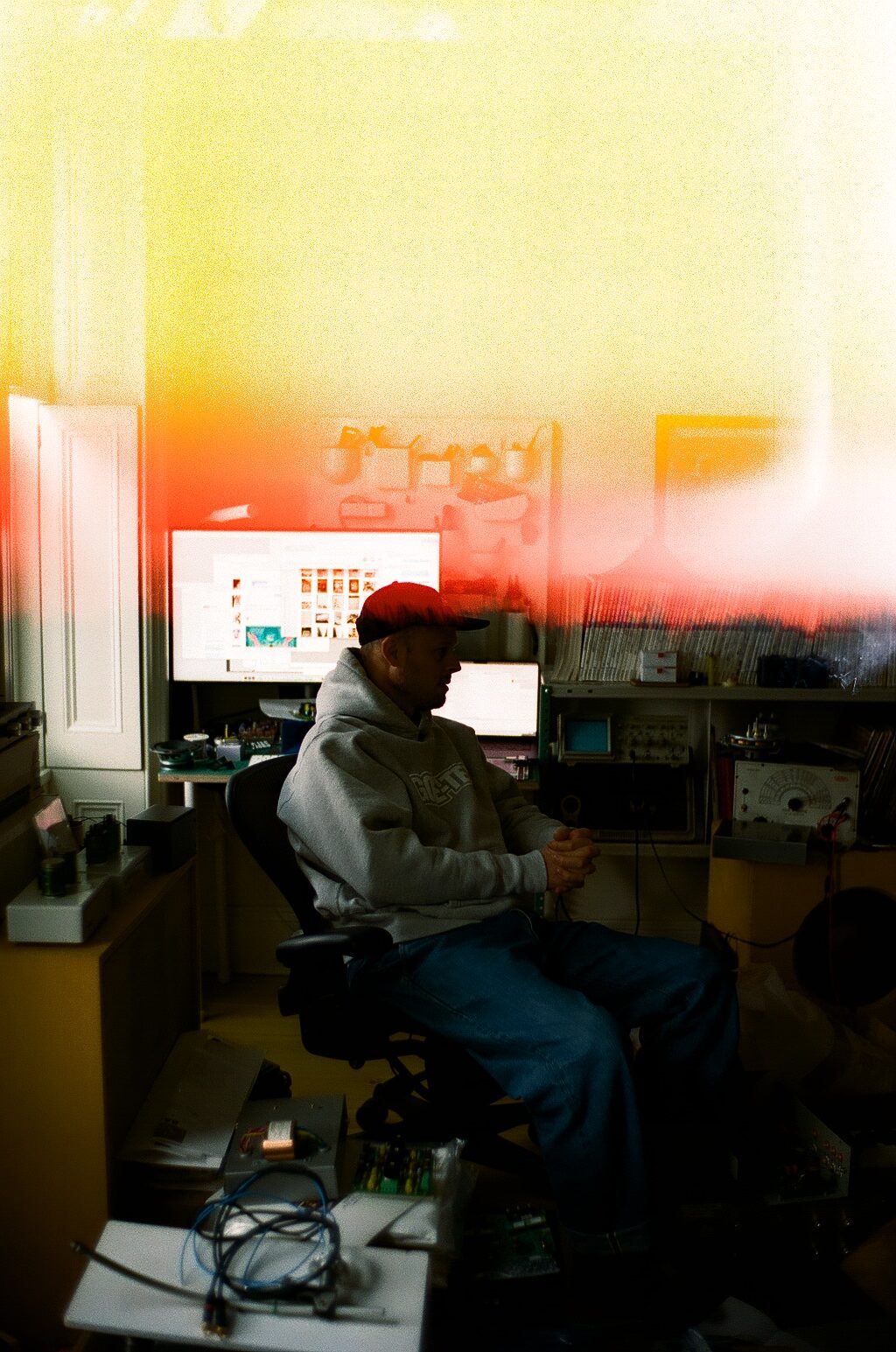
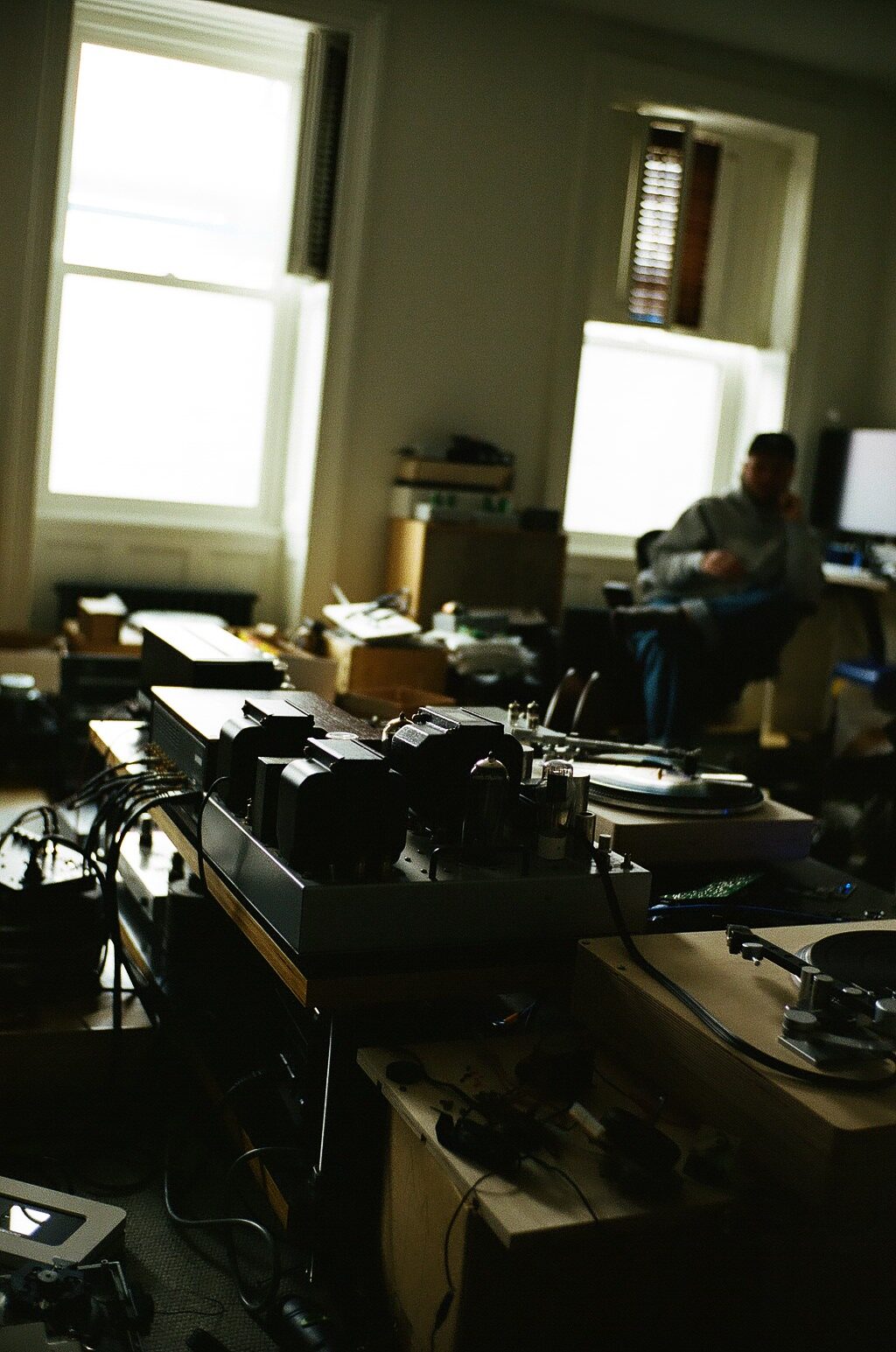
It’s an elegant approach that undeniably works and one that’s landed Turnbull’s speakers and bespoke sound systems in the homes of everyone from golden-eared producers like Mark Ronson and visionary creative powerhouses like Turnbull’s friend, the late Virgil Abloh, to hip, audiophile-minded venues and art spaces like NYC’s Public Records and elevated retail shops like Supreme’s stores.
OJAS Artbook shelf speakers in particular have become a massive hit in the rapidly growing audiophile community and are an elaboration and a refinement of the design philosophy that Western Electric and Altec Lansing defined between the 1920s and 1990s. Harnessing the sound of the venerable JBL 328c 8” coaxial unit, the Artbook speakers are sold at a major premium assembled, but are also available as a kit at a substantially more accessible point of entry. For Turnbull, selling his speakers in the form of a kit is about more than novelty or just saving customers money by shirking the hassles of in-house manufacturing – it’s about fostering the DIY spirit that’s played such an important role in his own career. Turnbull’s DIY kit concept also betrays the common assumption that the audiophile hi-fi world is a space where top-tier quality is accessed only by spending more, a reflection of his immersion in Japan’s audiophile culture. More on that later.
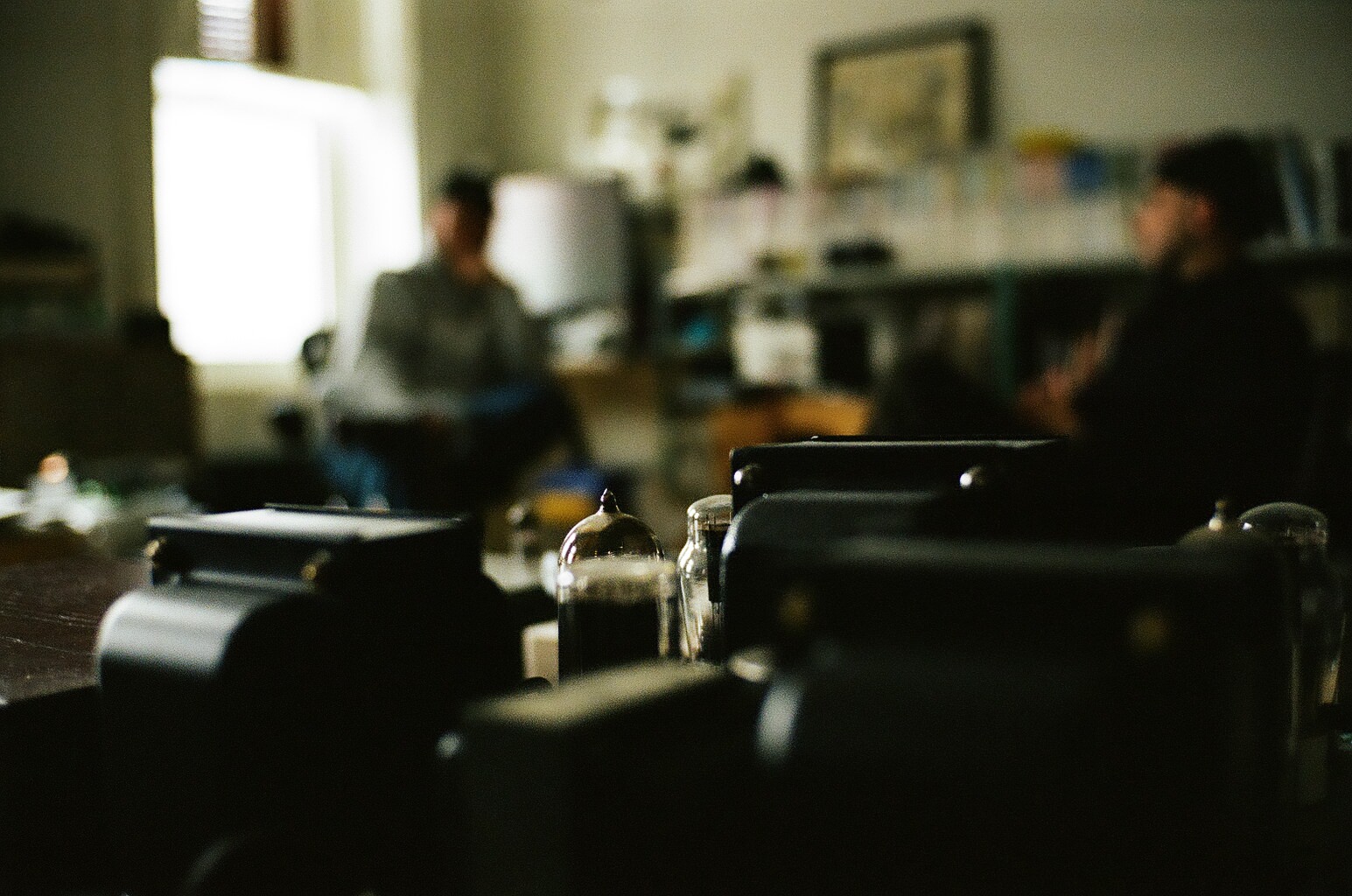
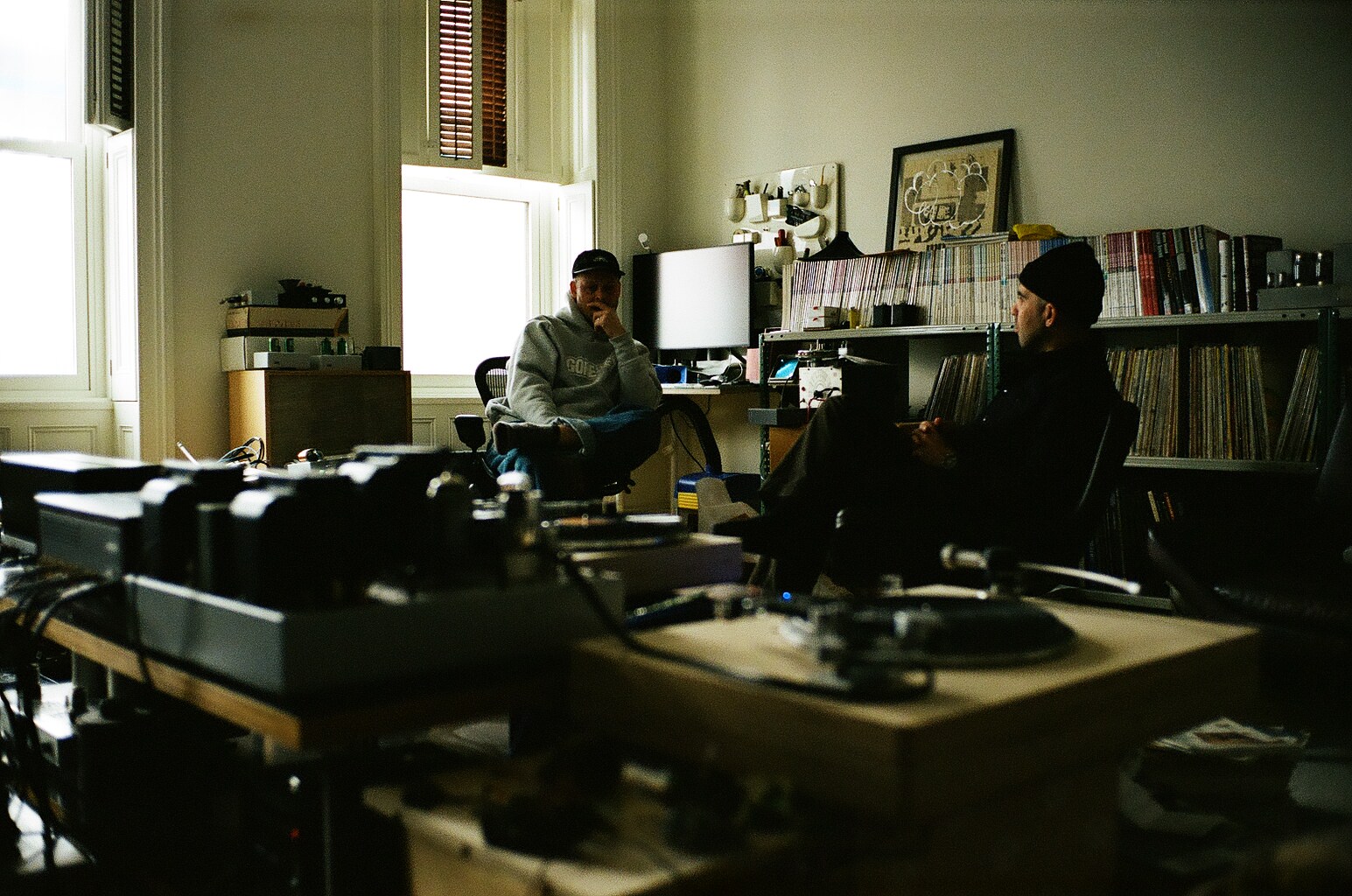
Devon Turnbull recently welcomed the C + T team into his Brooklyn home for a listening session and conversation. When you enter Turnbull’s listening room, which is tucked away on the 3rd floor of his lovely Clinton Hill brownstone, your eyes can’t help but dart around and survey the neatly arranged collections of vintage hi-fi parts and the shelves that are choked with full volumes of Japanese audiophile literature and a vast selection of vinyl. Turnbull’s personal hi-fi system is a confrontational-looking perpetual work-in-progress comprised of various cabinets finished in OJAS’ signature pewter gray paint, festooned with tremendous horn units, and boasting everything from those wonderful little JBLs to a downright cartoonishly large 31.5″ Fostex FW800HS “Super Woofer.” In front of a pair of cozy leather listening chairs sits a large coffee table that houses some homemade turntables, custom tube amps, and wild assortments of vintage cartridges and hi-fi tchotchkes. The room is something of a living sound lab and a testament to just how deep Turnbull has gone into his audiophile obsession – one which he views like a daily art practice. And while Turnbull’s hi-fi system might look fully capable of causing absolute aural carnage, the sound that came out when he dropped the needle on the delicate avant-garde work Bayou by Thomas Strønen, Ayumi Tanaka, and Marthe Lea was a revelation – articulate, complex, and carrying a kind of lush dimension you don’t realize you’re missing out on until you experience it in the flesh.
The following conversation touches on everything from Turnbull’s origins in the DJ community and streetwear world to advice for nascent hi-fi enthusiasts, why doing things yourself matters, the enduring charms of minimalism, and of course, the man’s philosophies on sound and design.
How did you first get into the hi-fi audio world?
DT: Records have been a part of my life for as long as I can remember. I’ve been passionate about music since before my earliest memories. I started collecting records and DJing when I was around 12 years old, so it was around 1992 when I got exposed to hip-hop, and dance music.
In college, I was in a program studying audio engineering and thought I would go into recording. I was producing some music at the time and DJing was the central part of my life and I knew I wanted to do something creative, but that was the only thing I was ever encouraged to pursue creatively. So I was producing music and thought I’d try and find bridges to the artists I was influenced by and figure out how to get into the studio with them, but I was also writing graffiti and doing some visual art as a hobby. I’d made some t-shirts for myself and Alife had just opened and they encouraged me to bring some in and sell them on consignment. Pretty much right after I dropped off like five shirts that I’d made by hand, they called me up and said Beans from Antipop Consortium – one of the main artists that I aspired to find a bridge to – had come in and asked if I could come over to his house because he wanted to borrow some clothes for a show he was playing. At that point, I realized that creativity in general could be a multi-channel, multimedia way of expressing yourself and I opened up to doing literally anything creatively – not just working with sound and music. That was kind of the thing that nailed this kind of cross-section/venn diagram of things I was interested in, being hip-hop, avant garde electronic music, and the visual factor.
That took off and I started a menswear brand called Nom de Guerre in 2003 that clearly had tremendous potential. I shelved all of my other creative pursuits to focus on that for a long time – including DJing. I put all of my DJing records in the closet shortly after and started selling a lot of the equipment I used to DJ to buy hi-fi equipment. I changed the way I listen to music from playing records in a way that was about manipulating music and playing music for people in a certain social environment, to applying the same knowledge that I’d gained in the pro audio world to my own home audio practice. That basic understanding of sound, audio engineering, and the way equipment works. Nom de Guerre had its creative studio in Japan, so I had been working there a lot and I was exposed to this really extreme world of hi-fi that Japan had and I was very attracted to the way the Japanese approach hi-fi.
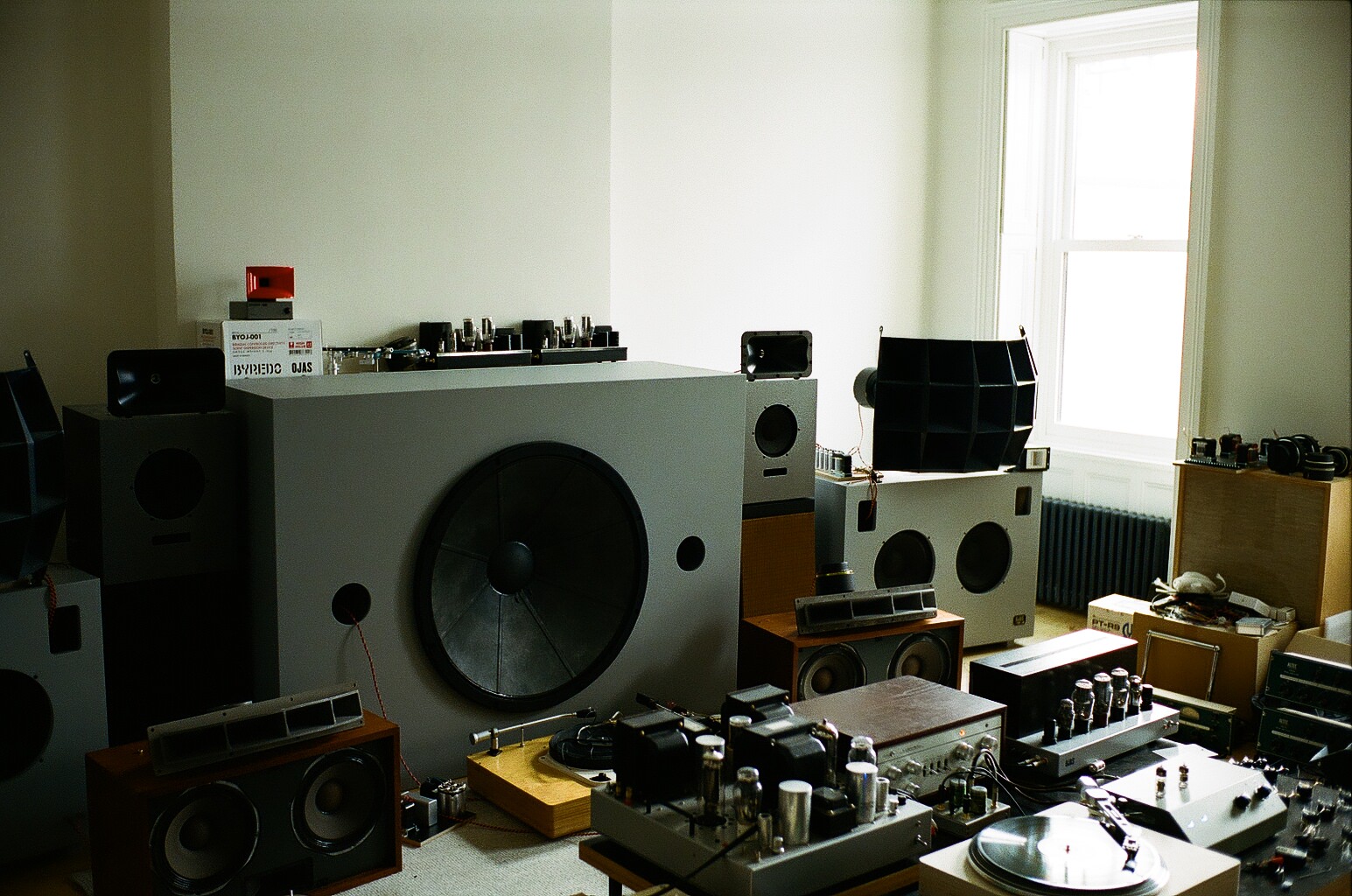


What drew you into the Japanese hi-fi world?
DT: First of all, the sound obviously. The sound of triode-based electronics and high-efficiency speakers is mesmerizing. The appreciation for and appropriation of commercial gear from the golden age of American audio engineering and using that in a home hi-fi context – there’s so much about that which resonated with me. Also the culture; I think a lot of people in the West knock audiophilia as being essentially a hobby of consumerism, but you could never look at the Japanese hi-fi scene and call it consumerism. It’s much more in-depth than that and in the scene, I was inspired by, people don’t talk about their audio system in terms of electronic boxes that are connected to each other. They’re not talking about one brand’s preamp or another brand’s amplifier – they’re talking about the materiality of components and connectors, they’re talking about capacitors and transformers and resistors. It’s the finite materials that go into the system, so it’s the kind of thing where you can’t just tell someone you got a single-ended 2A3 amp, it’s important to specify what the output transformer is first and foremost, and then the size and materials of that transformer. The materials used are more important than the brand that made the thing. In that culture, if you can wind your own transformers with the right materials and do it very inexpensively, you’re going to be respected more than the person that
just bought the premium thing off the shelf.
That’s where I first saw DIY as a pursuit of the very top end as opposed to being the cheapest way of attaining something decent. In audio, you can often build something of much higher quality than something that’s mass-produced, maybe for less money, but you might spend more building yourself a pair of speakers than you’d spend on a pair of off-the-shelf speakers, but the quality of the components makes a huge difference. There are old Altec enclosure manuals that were made to teach subcontractors or even DIYers how to make their own speaker cabinets, and they just say right there in the manual that there are things that you can do with your time that speaker manufacturers can’t because it would cost so much more to the end-user because of the man-hours involved – if you’re willing to discount the value of your own time.
How do you sell this world to the streaming generation – people who often don’t even realize how low quality their typical listening experiences are?
DT: I would hate to have to sell that someone verbally! You just have to experience it.
Other than that, DIY is an important part of this whole thing for me. Keeping that culture alive in America is super, super important to me. I would say it’s more important to me than growing this business – just promoting the culture around really being involved in your hi-fi. It’s amazing and so gratifying how many people are willing to take the time to participate in that through these kits. I have customers who are headlining Coachella and take time within two weeks of Coachella to build a speaker kit. Virgil [Abloh] would be at home between shows and FaceTiming me while wiring up a speaker kit. It’s amazing and that’s mission accomplished on so many levels. I think there’s still so much to expose people to and teach them in general about this thing, but I wanted to make DIY part of my brand for a very long time. Look, if you’re into skating, no self-respecting skateboarder goes to the skateshop to have them put their skateboard together or adjust it. I think that we’ve got a situation now where people are starting to engage with sound the same way, that they’re starting to understand that they can do it themselves.
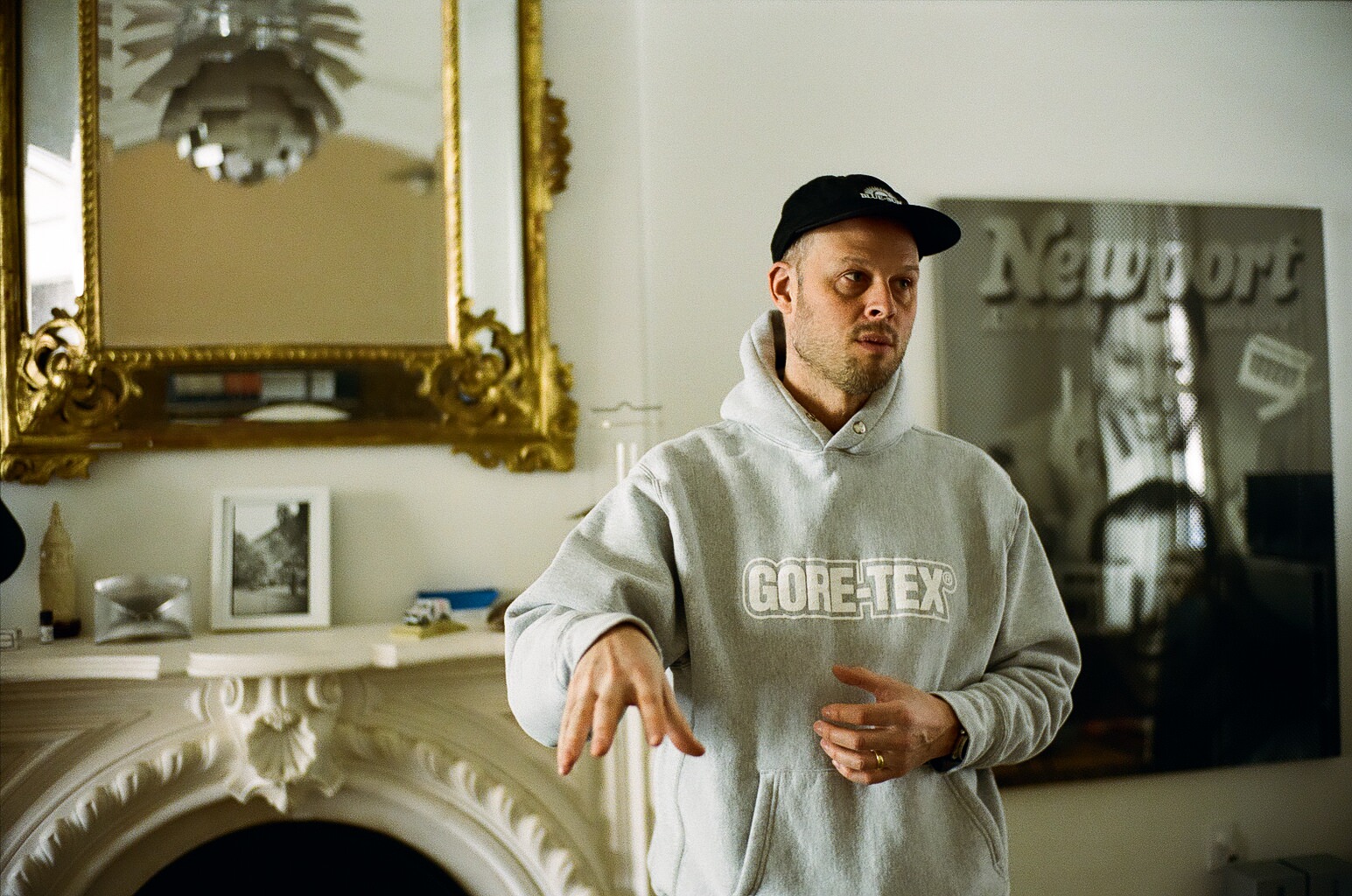
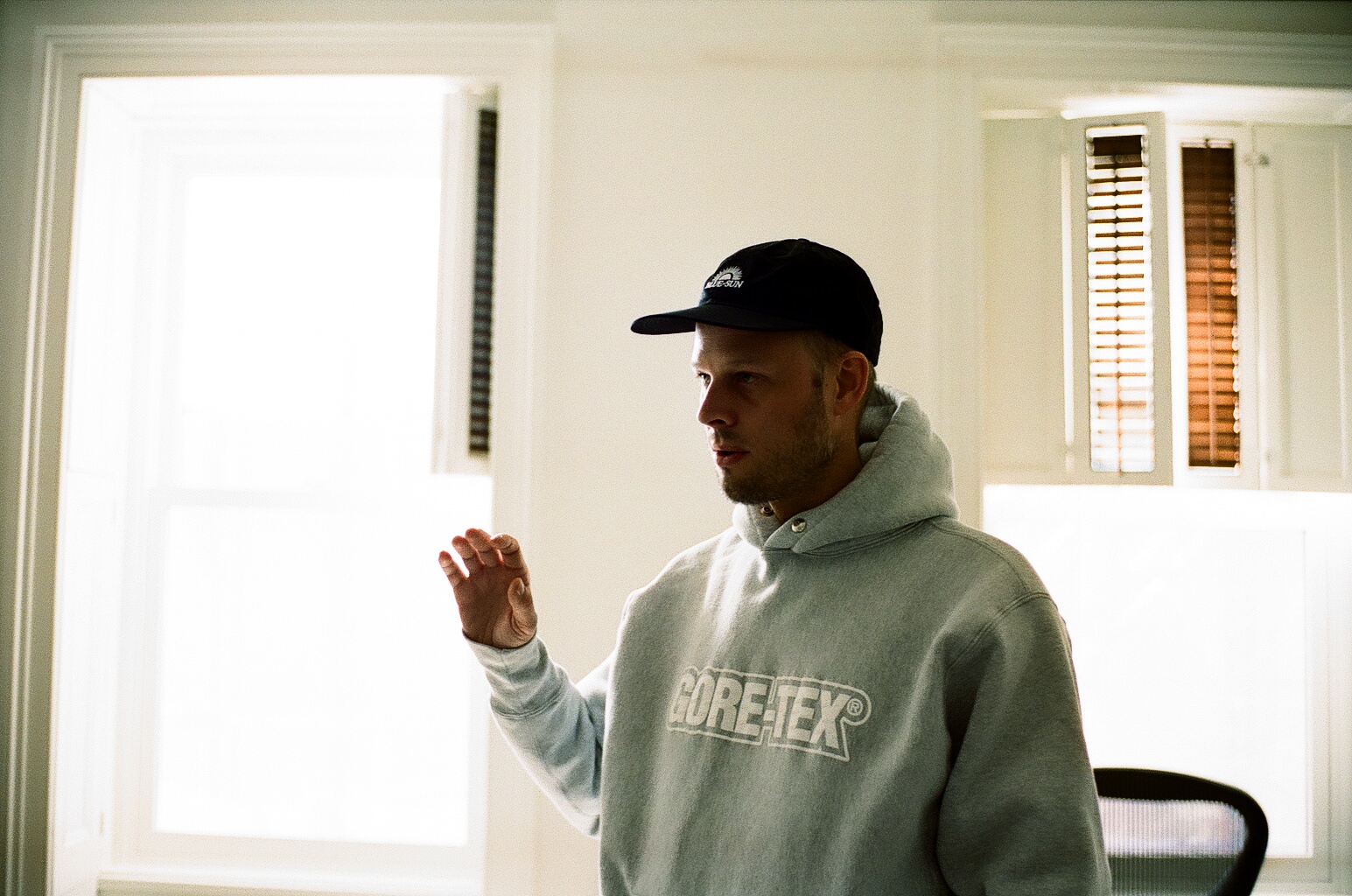
You’re still creating across different mediums, for example you recently collaborated with Byredo on a scent and diffuser. Do you have a single overarching philosophy or approach when it comes to your creative endevors or thing that ties all of your work together? It seems like its refined simplicity to me, but how would you describe it in your own words?
DT: Refined simplicity is a good way of putting it, yeah. In terms of the audio work, I would say that you could make parallels to the way I work with graphics or the way I work developing a fragrance; it is simplicity and minimalism often in concept. I try to explain to people a lot that my design philosophy with audio is absolutely minimalism. When a lot of people think of minimalism and audio products, they’re going to think of the opposite of what I do aesthetically – as in something from the Dieter Rams, Massimo Vignelli, Nakamichi, kind of world. I always thought Massimo Vignelli was the absolute king when it comes to minimalist modernism because only a true genius can take type setting something like Helvetica Bold and turn it into a global aesthetic movement and a brand. I always thought I’d never be able to achieve that level of mastery in terms of minimalism in graphic design because it’s already been done. But when it comes to minimalism in audio from a circuit design perspective, it’s about doing as little as possible to the signal to get a really pure sound.
If you look at a schematic diagram of most of the amps that I build, you can clearly follow the audio signal and see what components it passes through. The goal in designing that circuit was to put as few things in the path of the audio signal as possible while amplifying it enough to go from this tiny signal being generated at the cartridge and having enough energy to move the cones.
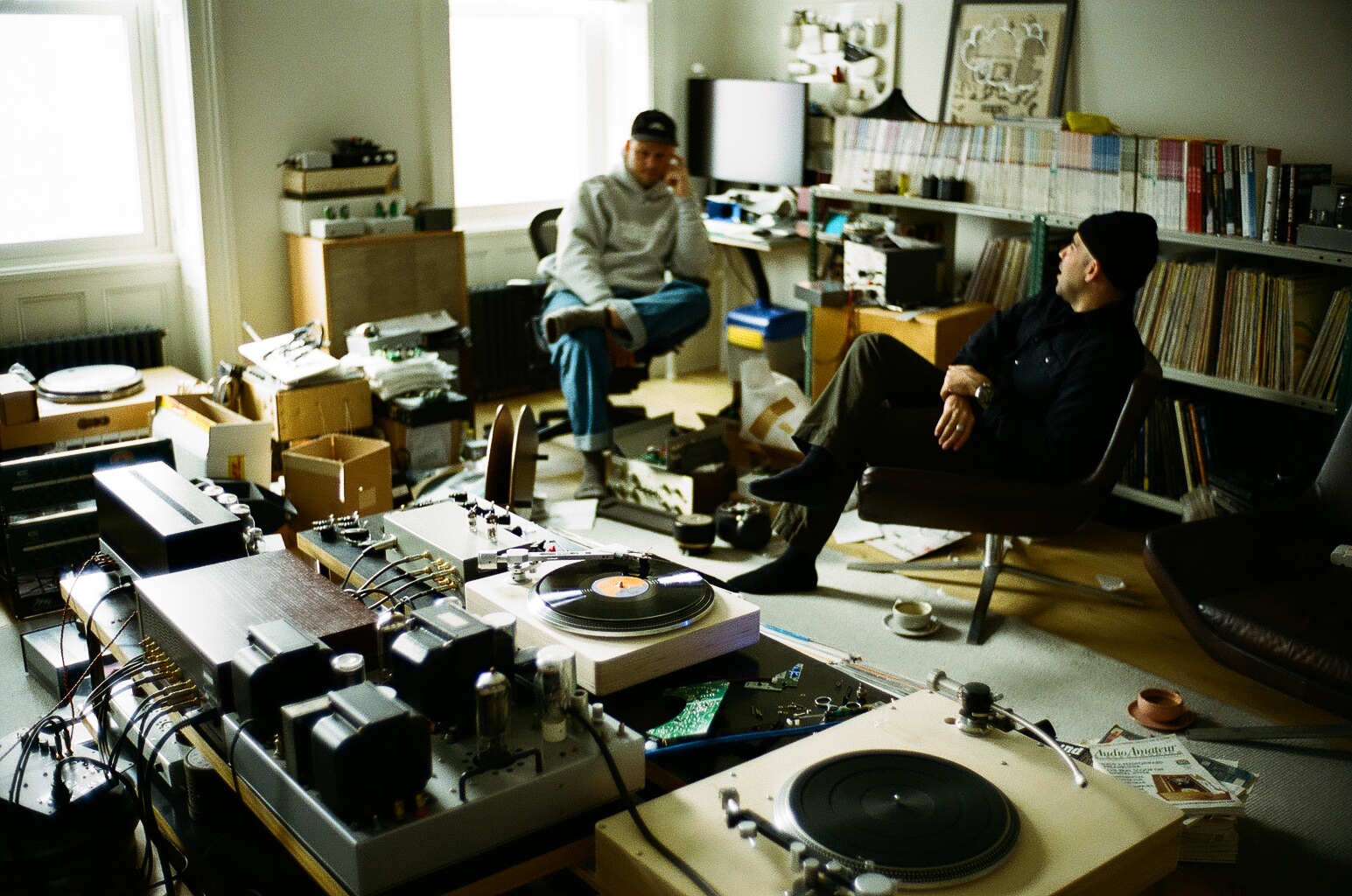
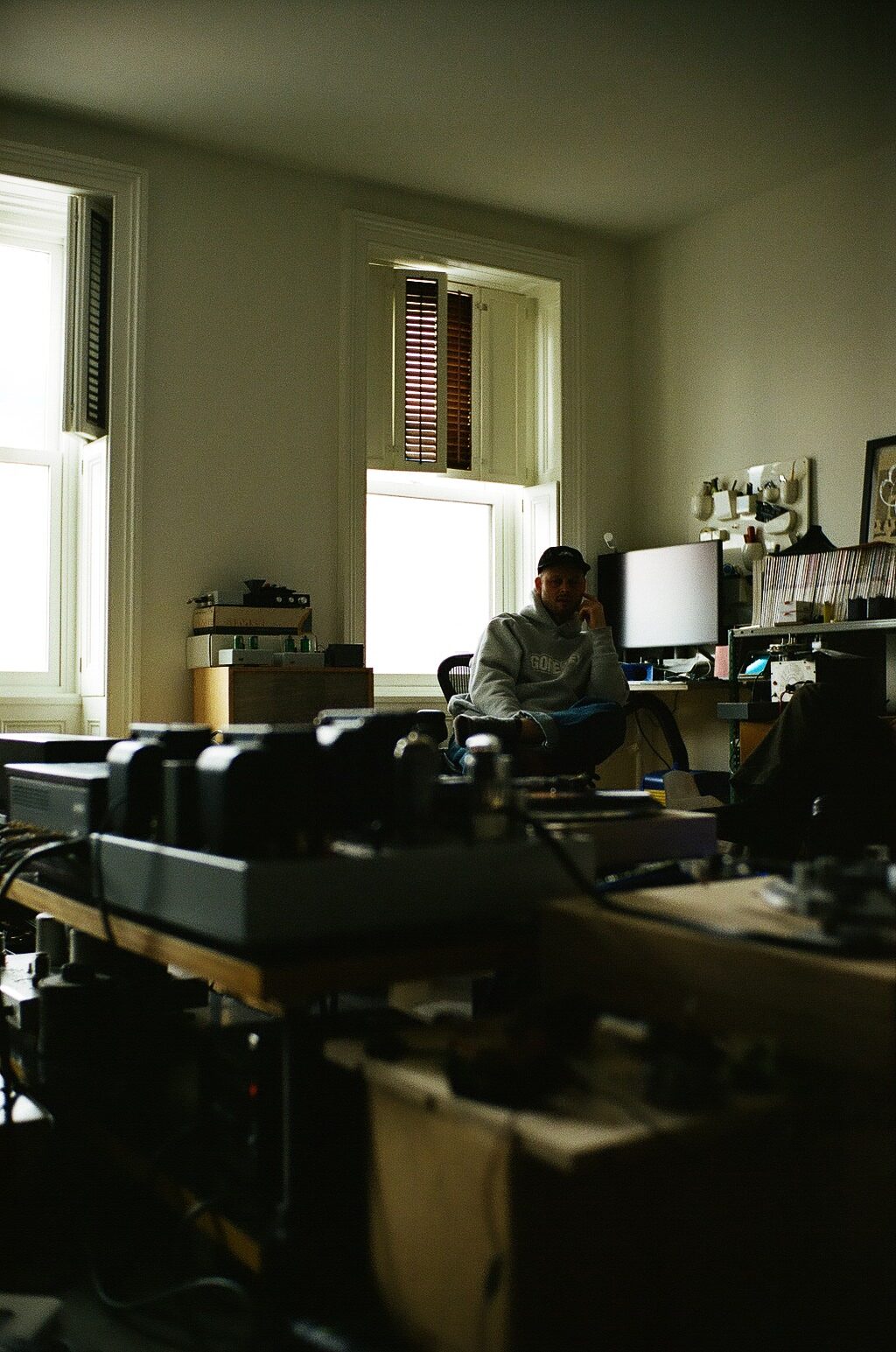
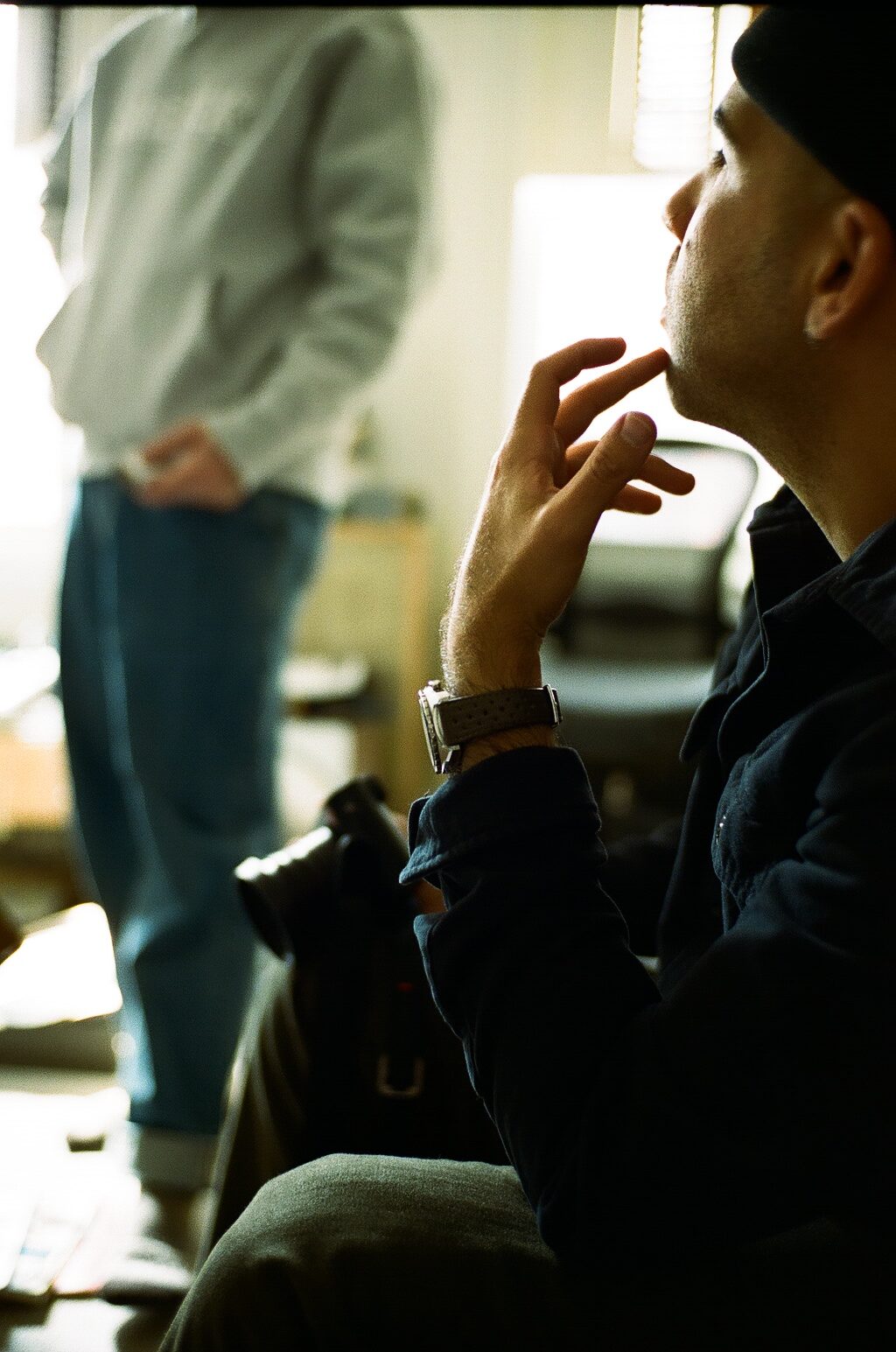
So if you put a poorly pressed record or a modern pressing made from a lower quality digital master, is that going to be reflected and accentuated through one of your systems?
DT: I tried to design the system in a way that isn’t overly critical and is going to make listening to any record satisfying. For example, I think tone controls are useful – which are typically a big no no in American hi-fi because people want as few things in the circuit as possible, but they also tend to buy some incredibly complicated solid-state amp circuit that’s got hundreds of components in it. You can do very elegant tone controls with very few components. If you look inside one of my amps, we use huge, very expensive (because of the manufacturing process) components and we use as few of them as possible. Those hundreds of components in contemporary units are doing so much to the signal to correct for poor quality components.
When I say this is all based around minimalism, when it comes to speakers, if the speakers involved are a horn-loaded compression driver and a paper-cone woofer, that’s exactly what I want it to look like, too. I don’t want to dress it up and try to make it look like anything it’s not.
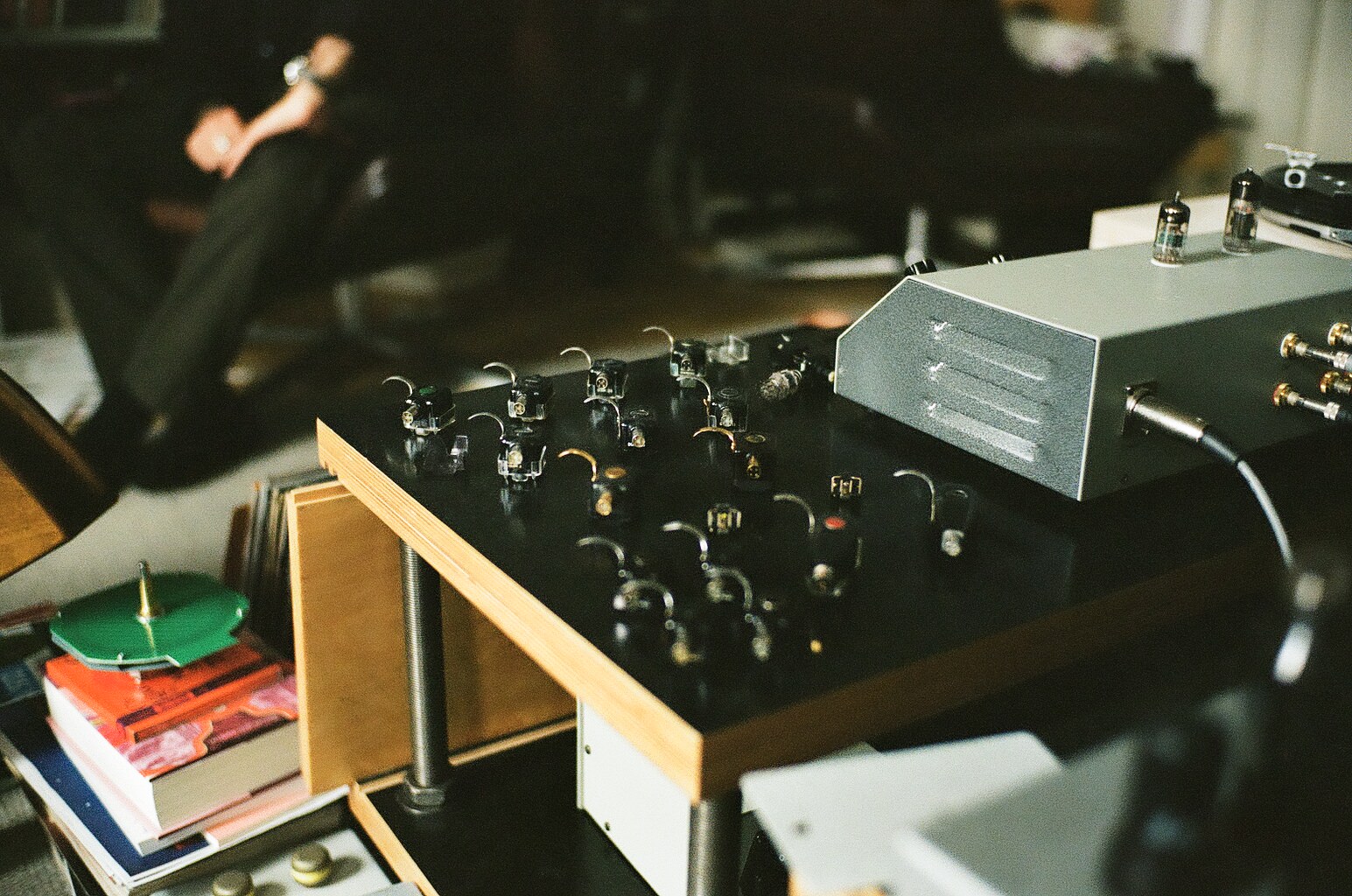
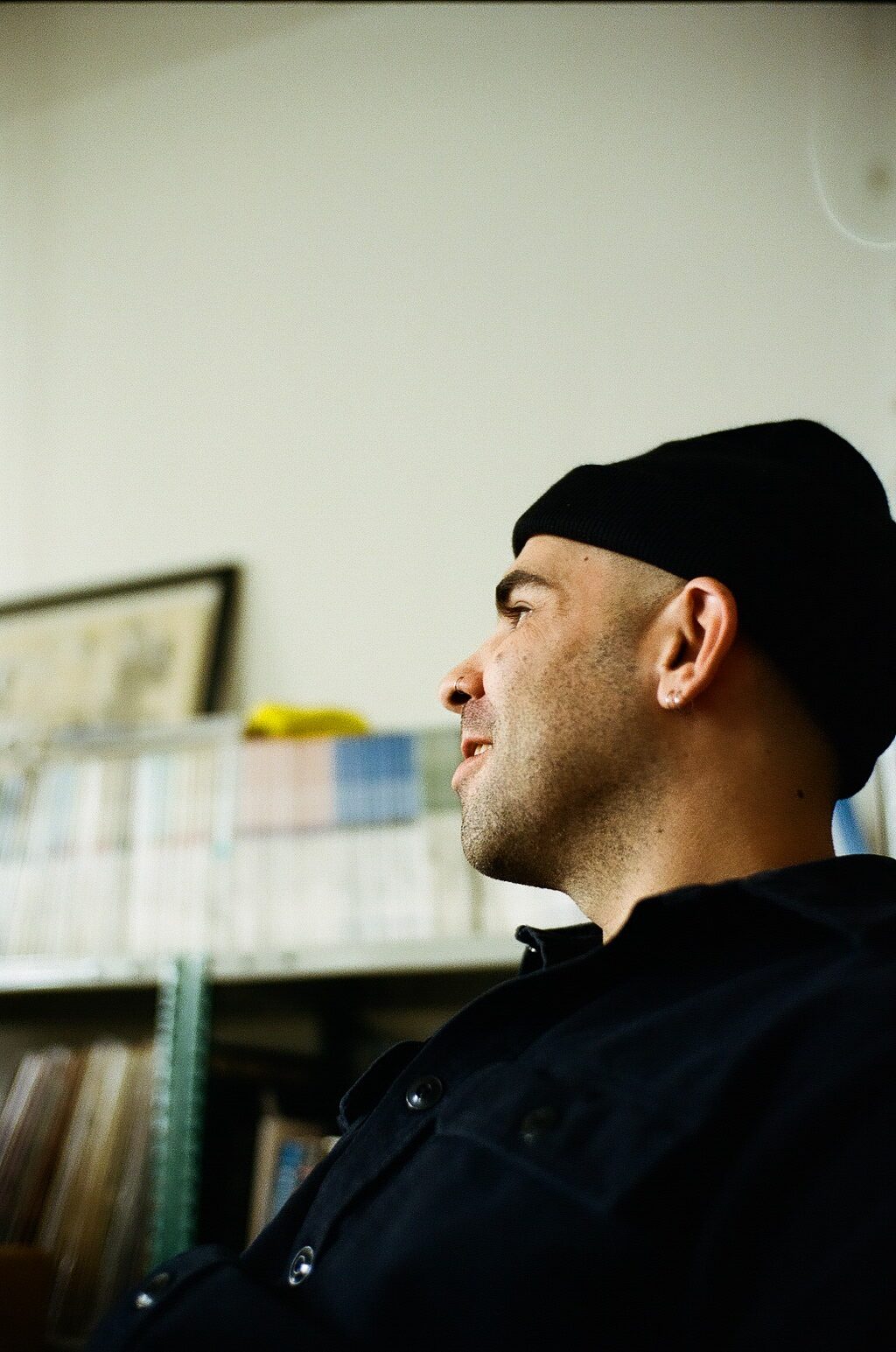
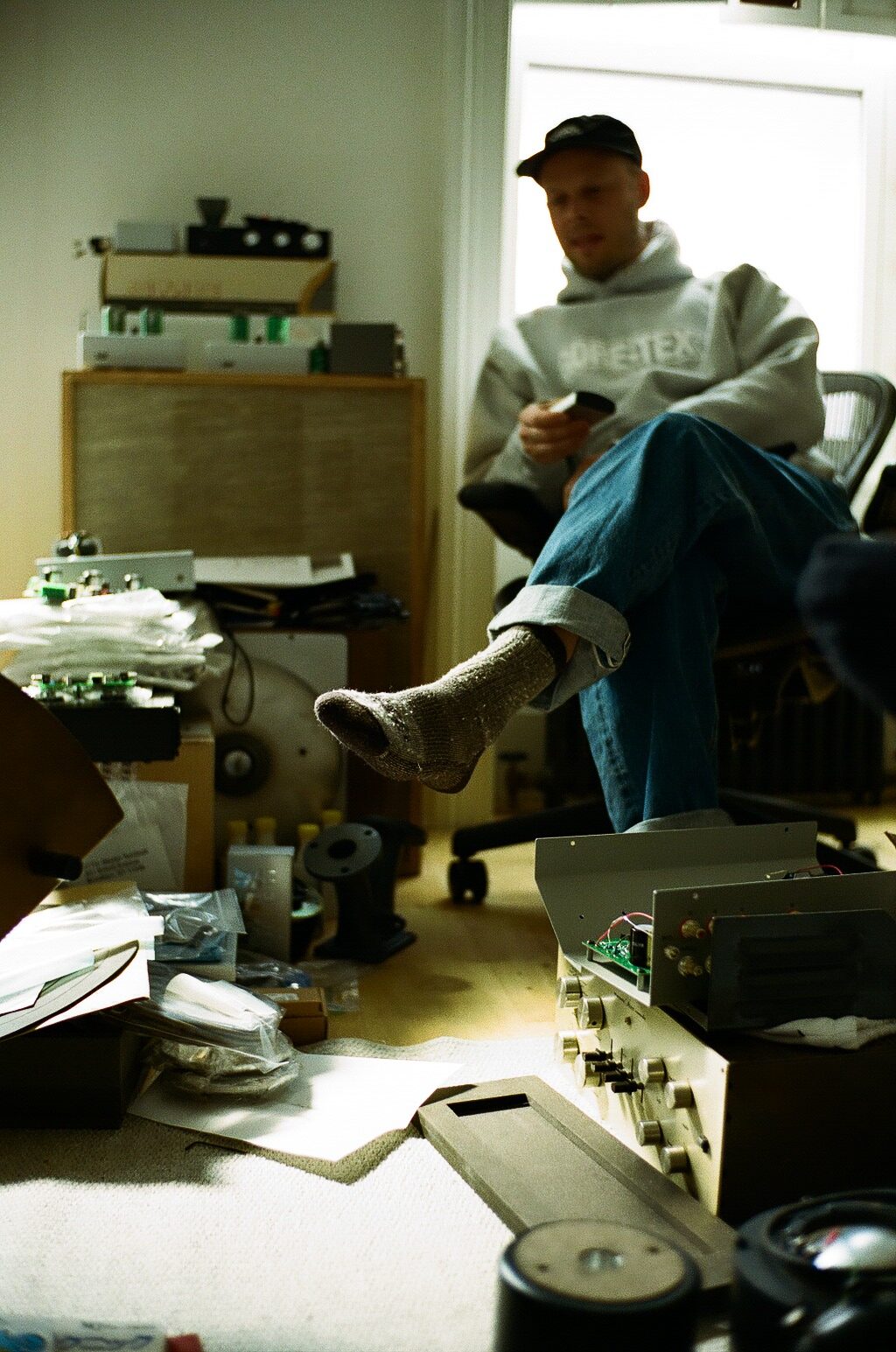
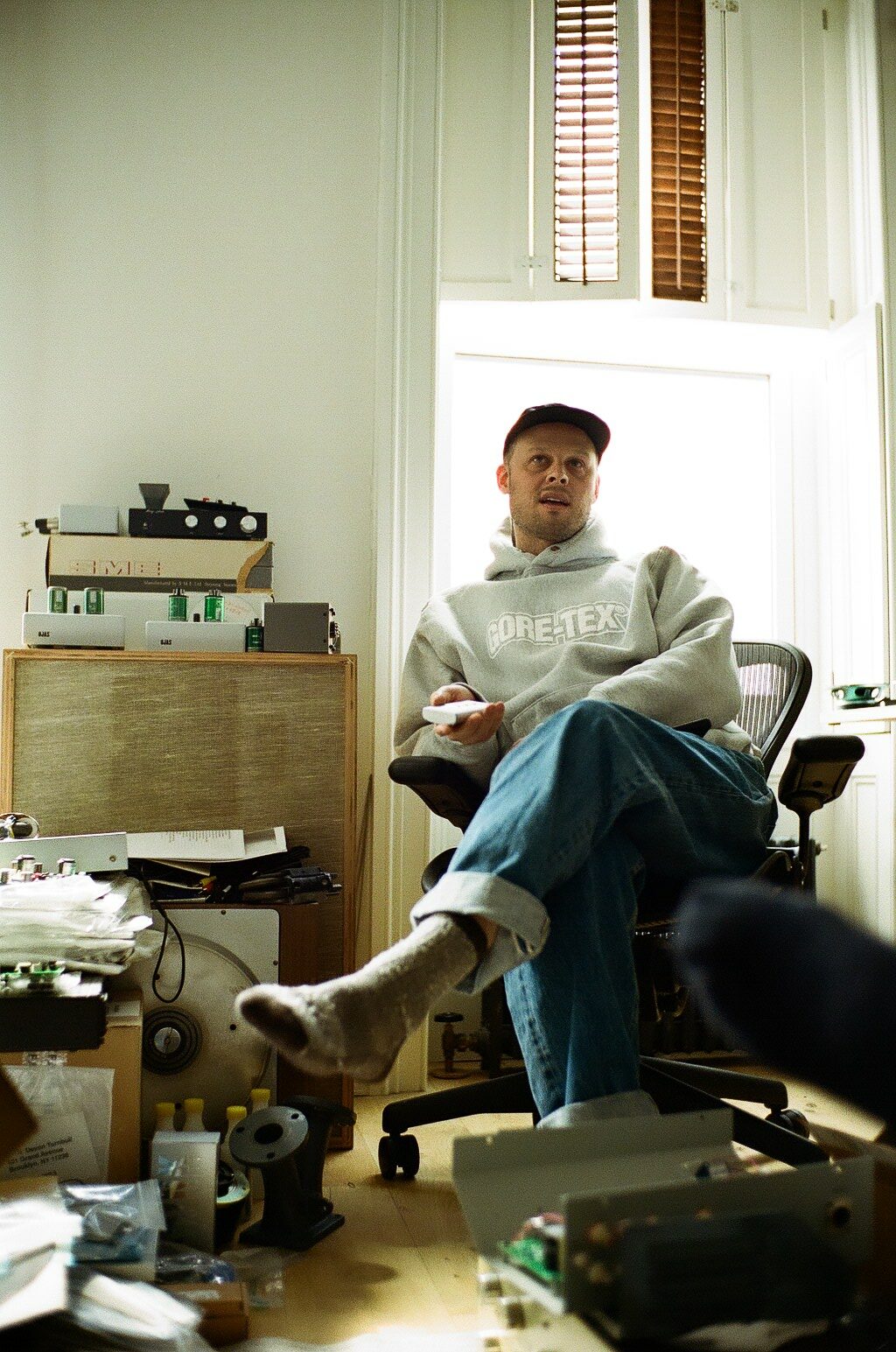
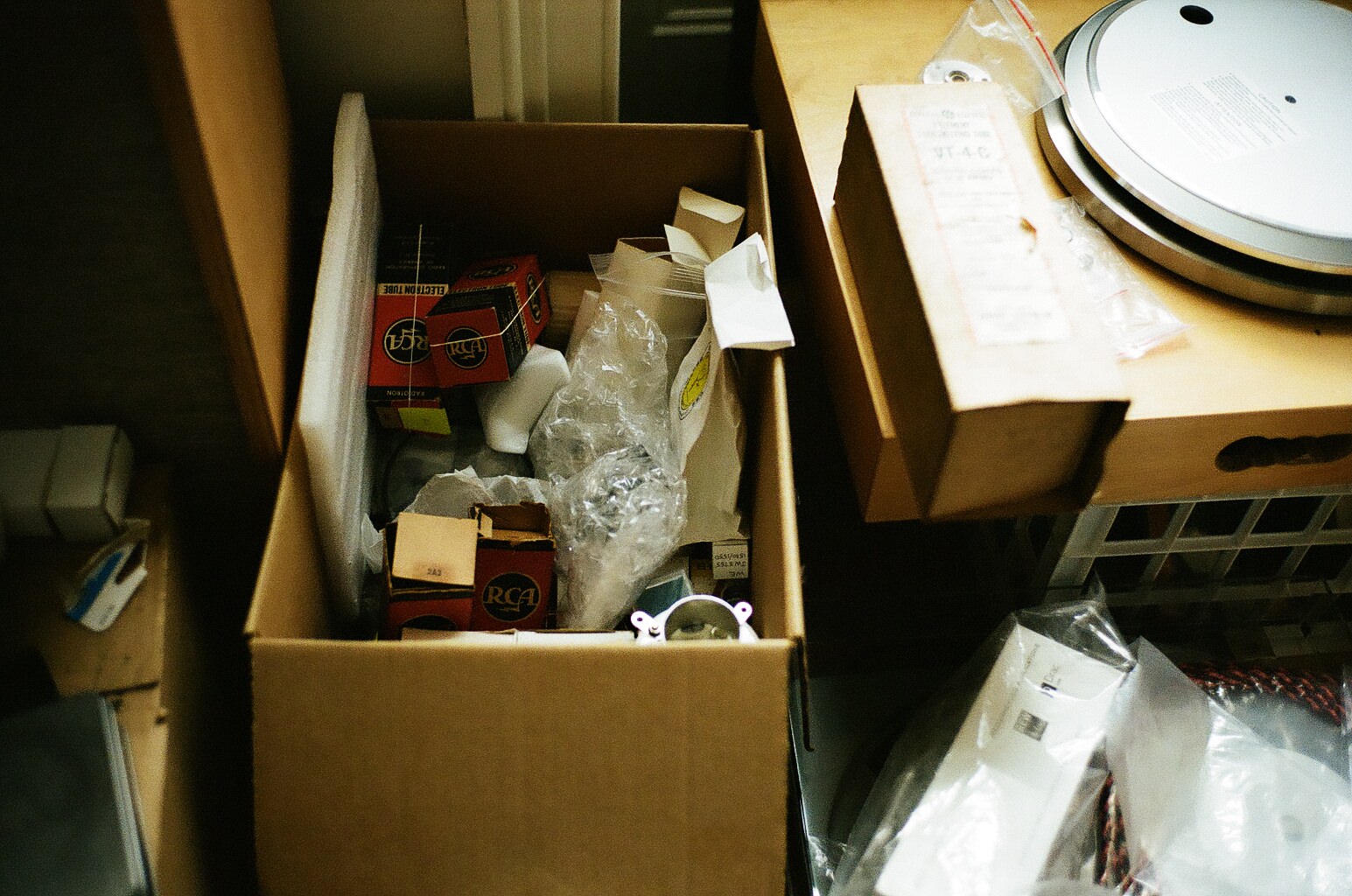
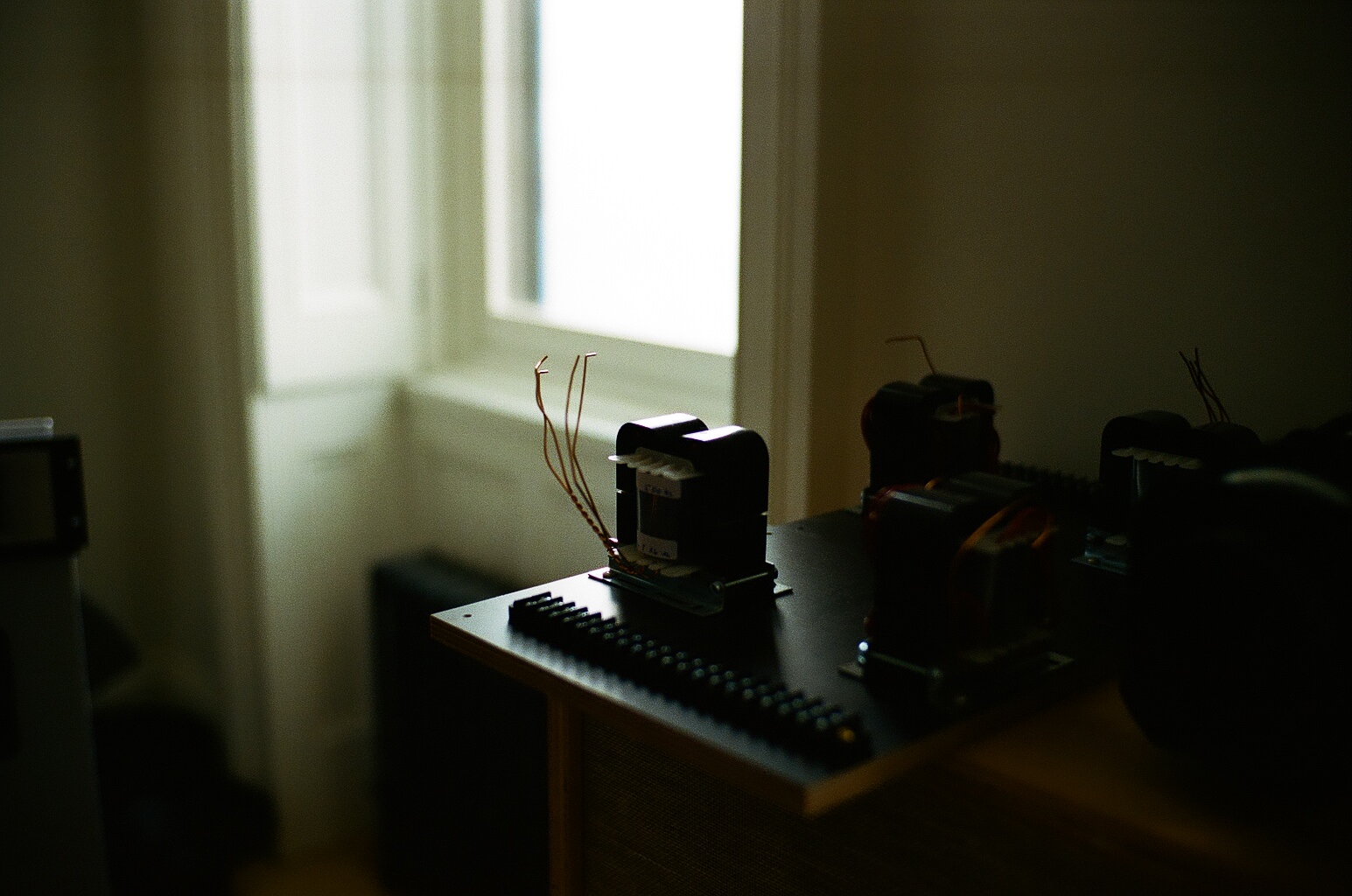
What do you do to stay inspired between your many creative worlds and sensory pursuits? Audio, visual, scent – how do you keep it going?
DT: I think the thing that keeps me excited and inspired is making sure I’m pursuing things that are exciting to me. I’m a very bad creative-for-hire; I’ve done agency work and I’ve had to do agency work for long periods of my life just out of financial necessity and there are some people that are really good at that and are like “Ok! I get the client’s perspective!” and can just fire up. It’s like pulling teeth for me and if I’m not just naturally inspired or sucked into a pathway for inspiration, then it doesn’t happen for me. So for me, it’s about following your passion and doing what excites you! If I could hit pause on all of my professional commitments right now and just take the next two years off to just do inspiration and personal work to further pursue the audio thing, that wouldn’t even be enough time for me to even just process the stuff in this room. I haven’t even opened half of these issues of MJ [Audio Technology Magazine] – I just collect them and it’s an incredible wealth of inspiration for me. And you have to just try this stuff to really know what it does. There’s also a lot charlatains in the realm of subjectivity and self-proclaimed expertise. I really strive to not be that guy and I never want to tell someone how they’re going to feel when they hear something.
I have a lot of customers that come over and sit and listen and fall in love with the gear. And some of them are very experienced, career music producers with incredible accolades and understand how to put together a sonic presentation and some of these guys come over and sit in here and listen and they’re like “just tell me how to do this” and then they want you to impart your subjective opinion on every piece of gear that they’re going to put into their system. So you realize at a certain point that I can help these people if they want my perspective, but when it’s someone out-of-the-blue and they haven’t come here and listened and fallen in love with my system in the same way, I really try to avoid giving much opinion. First of all, I want to avoid telling anyone that there’s anything wrong with the stuff they already like because you can get into a cycle of telling people that the stuff that they like isn’t good. It was good enough for them to have liked it in the first place!
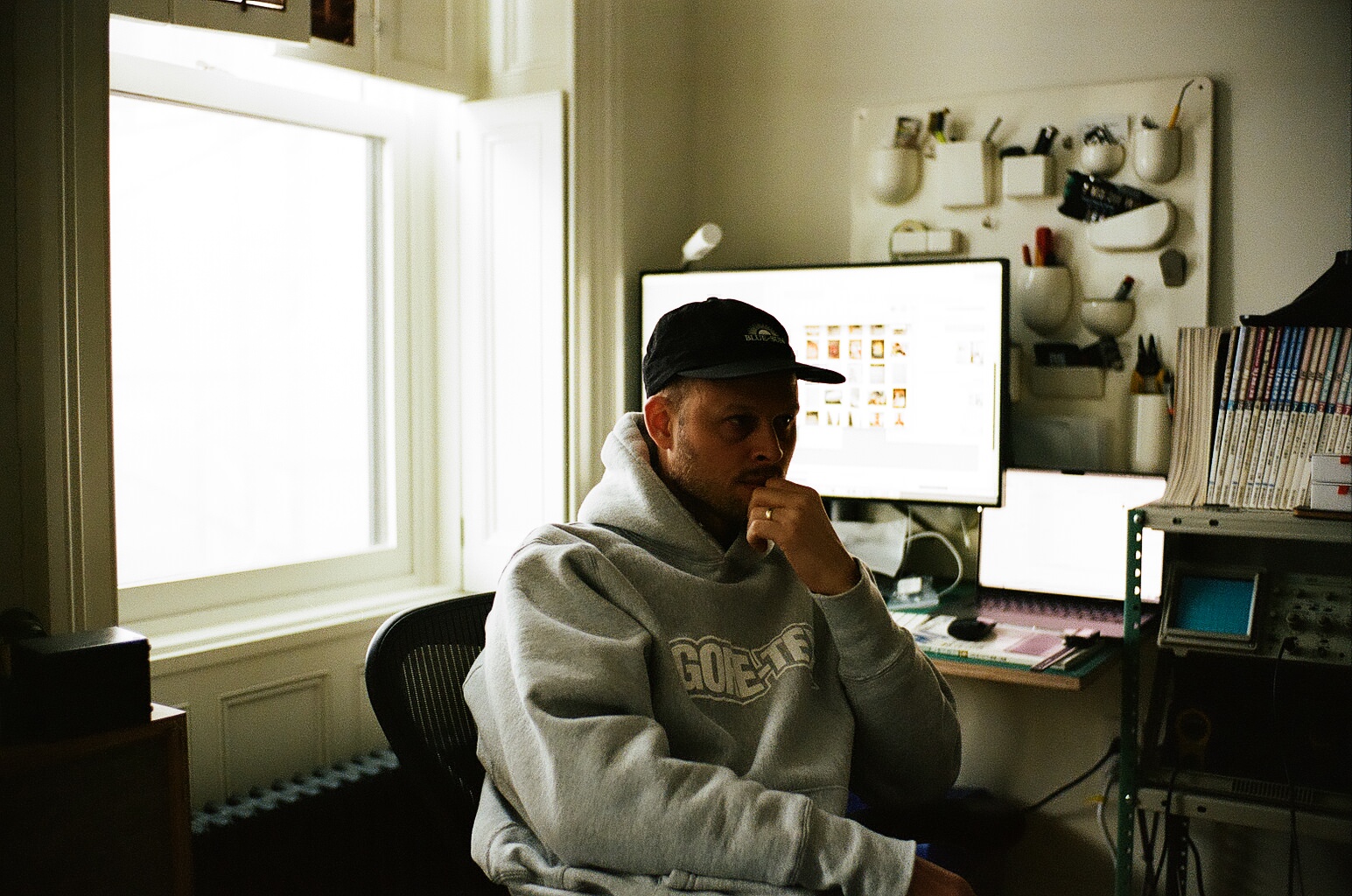
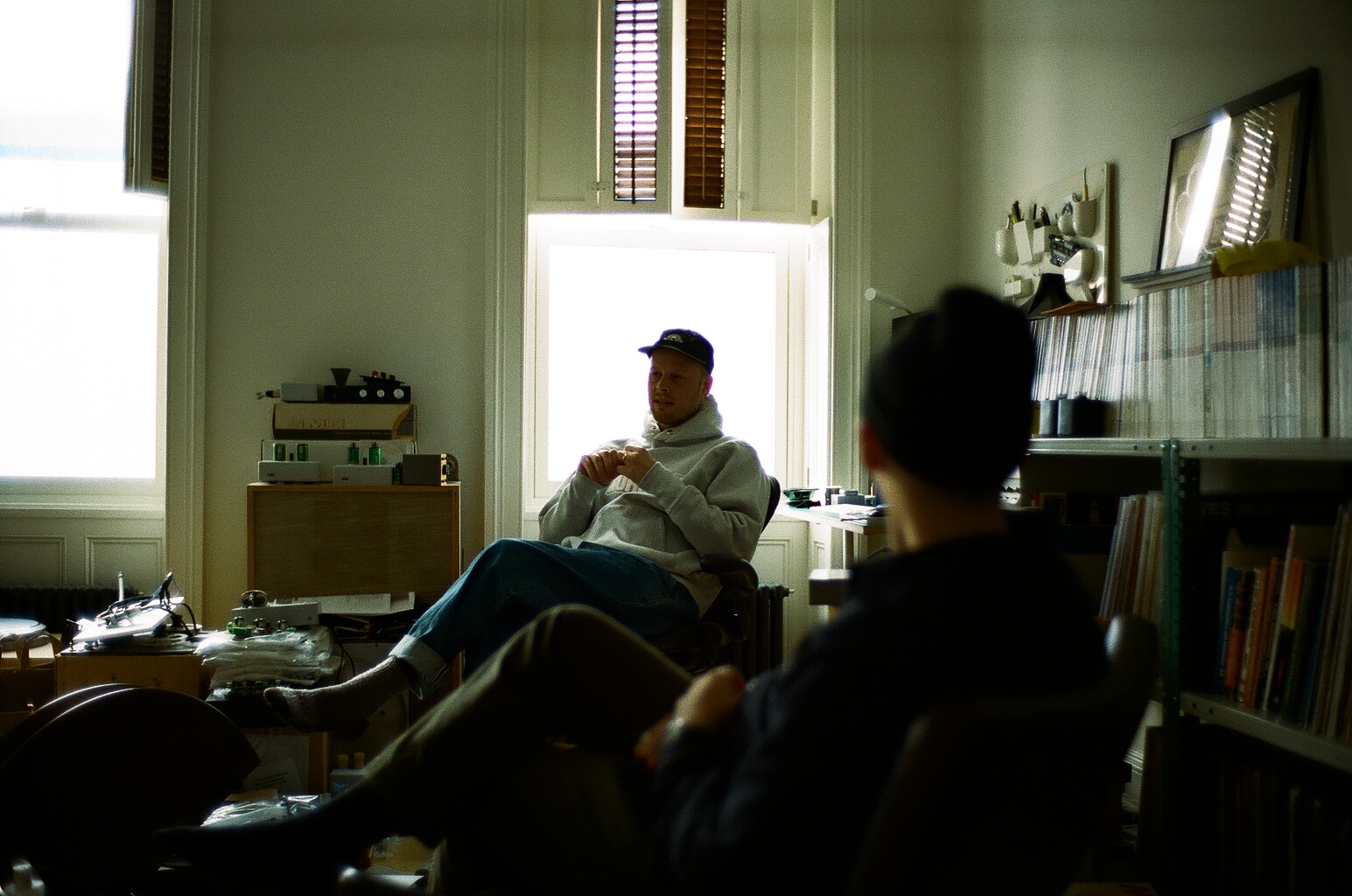
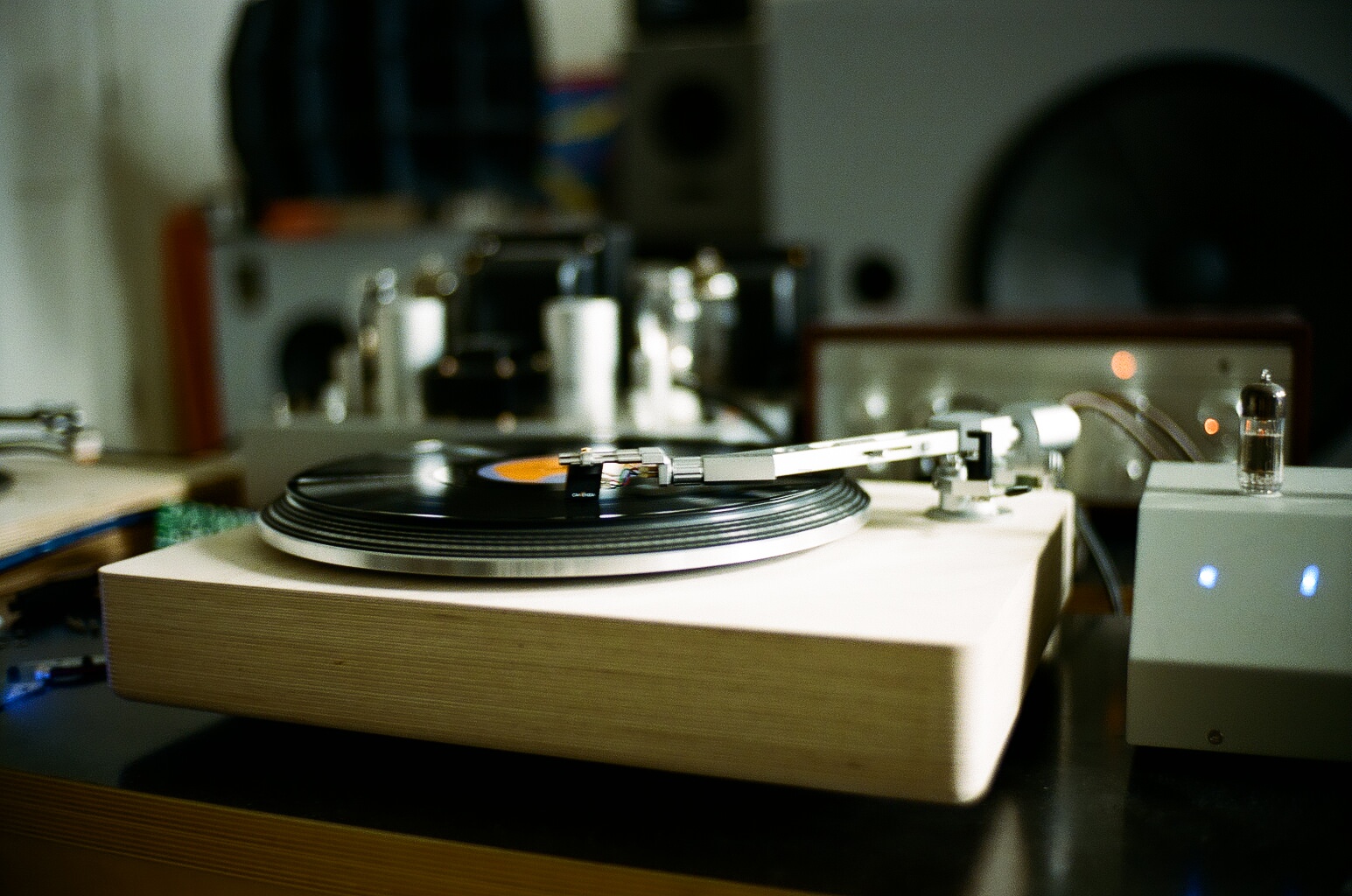
That said, what’s your advice for people interested in hi-fi audio that might not have a huge budget to throw at it? The nascent enthusiast.
DT: Experiment, trust your instincts, don’t be afraid to make mistakes, and don’t be afraid to formulate opinions that you’re going to change your mind about down-the-line, and try to find people whose advice you trust. I approach this the same way I approach spirituality; my perspective on a spiritual path is to trust the seekers, not the self-proclaimed knowers, and to look for the people that are seeking the same kinds of experiences that you’re seeking and see what you can learn from them and kind of approach everyone as if they’re no smarter than you are – because they’re not. They may have a tremendous wealth of experience that you can learn a lot from, but try not to fall victim to the spell of thinking one person is the only holder of the knowledge, because they’re never are. And stay off the forums!
You can visit OJAS Audio at https://ojas.nyc/ and on Instagram at @devonojas
All photos by Cameron Barr shot on a Leica M2 with Kodak Portra 400

Check out 'Reference Tracks' our Spotify playlist. We’ll take you through what’s been spinning on the black circle at the C + T offices.

Never miss a watch. Get push notifications for new items and content as well as exclusive access to app only product launches.
Sign up for our newsletter to receive updates and exclusive offers